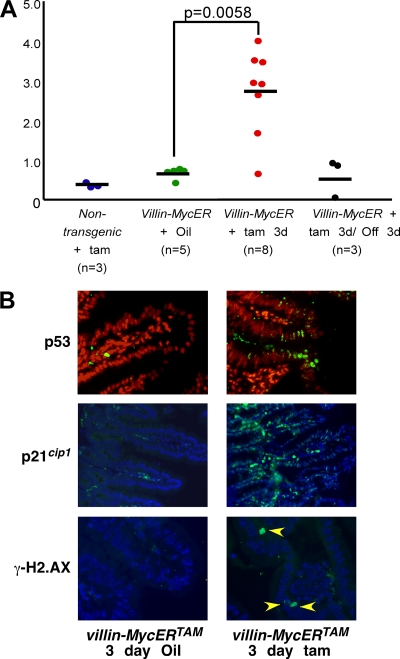FIG. 5.
Activation of Myc in intestinal epithelium of villin-MycERTAM mice triggers the ARF/p53/p21cip1 tumor suppressor pathway. (A) Real-time quantitative PCR analysis of ARF (p19ARF mRNA) expression in intestinal epithelia of nontransgenic control mice treated with tamoxifen (tam) versus that in villin-MycERTAM mice treated with the vehicle control (oil) or tamoxifen for 3 days (tam 3d). Myc activation triggers strong induction of ARF, which is lost upon MycERTAM deactivation for 3 days (Off 3d). (B) Immunofluorescence staining for p53, p21cip1, and phospho-H2.AX (in green, Hoechst nuclear counterstain in red) in intestinal epithelia of villin-MycERTAM mice treated with either the vehicle control or tamoxifen for 3 days. Myc activation rapidly induced accumulation of both p53 and p21cip1. In contrast, anti-phospho-H2.AX staining (a marker of DNA damage) showed only very occasional foci following Myc activation (yellow arrowheads) that may be attributable merely to normal mitosis (14). Hence, widespread p53 and p21cip1 induction occurs without concomitant evidence of widespread DNA damage.

